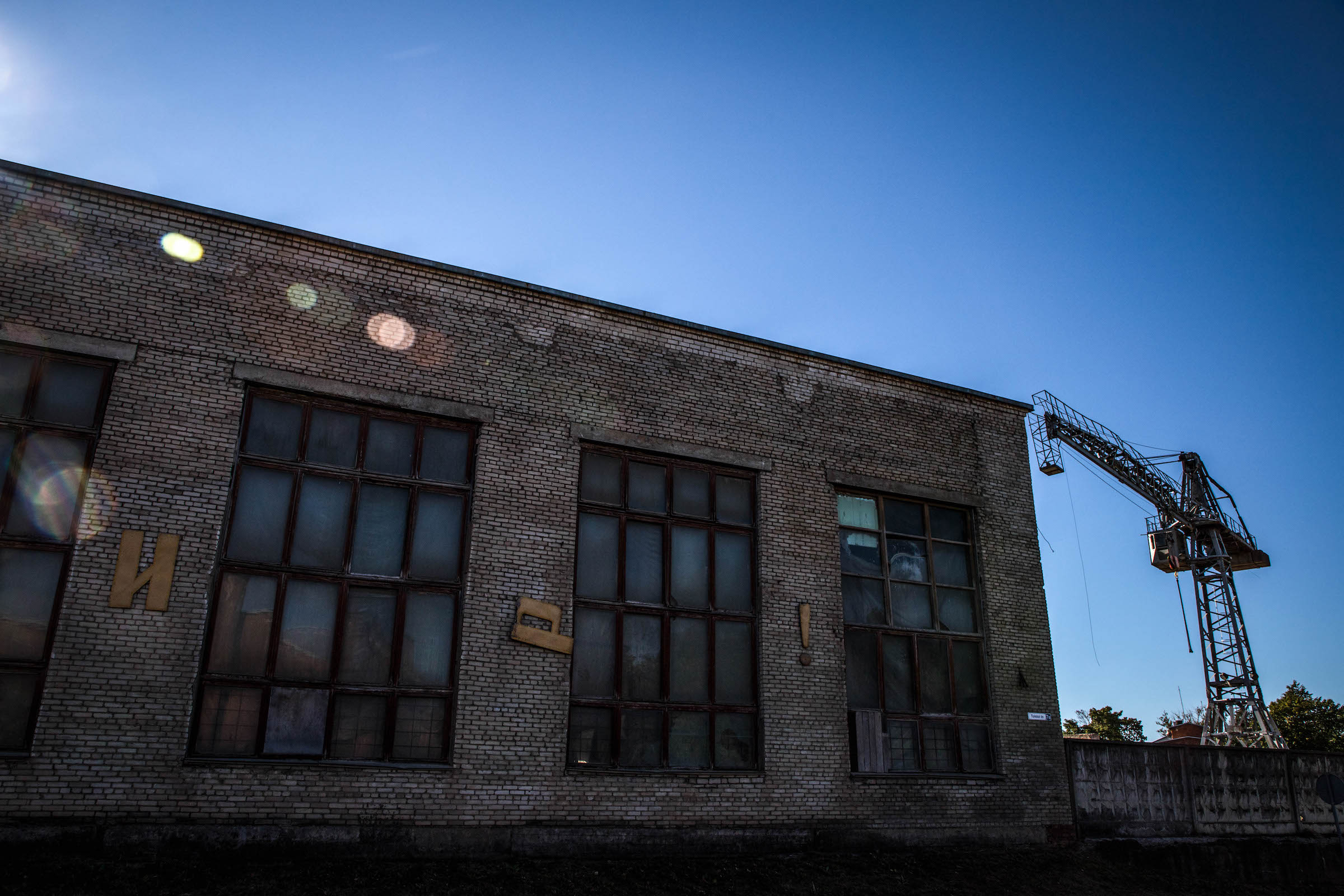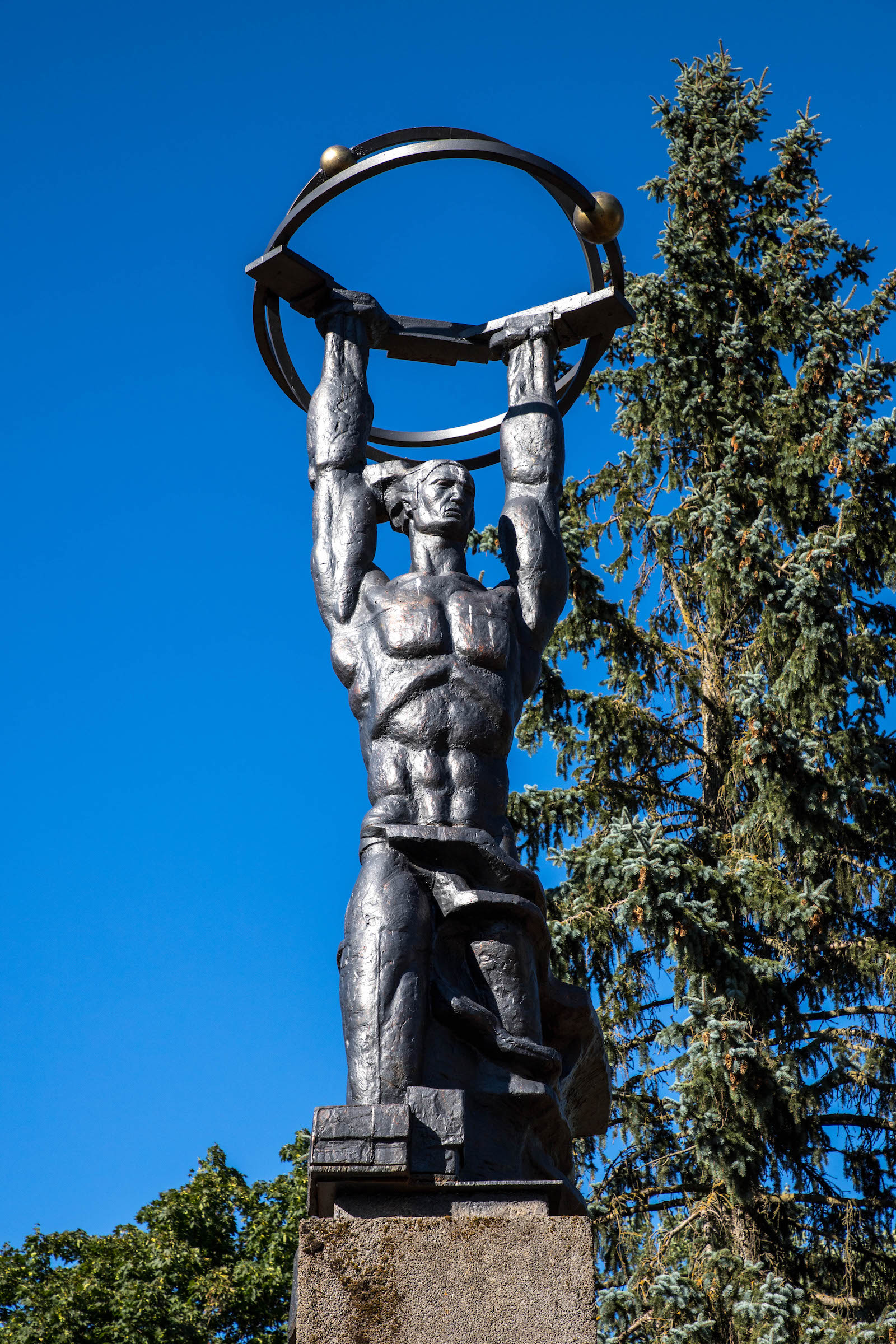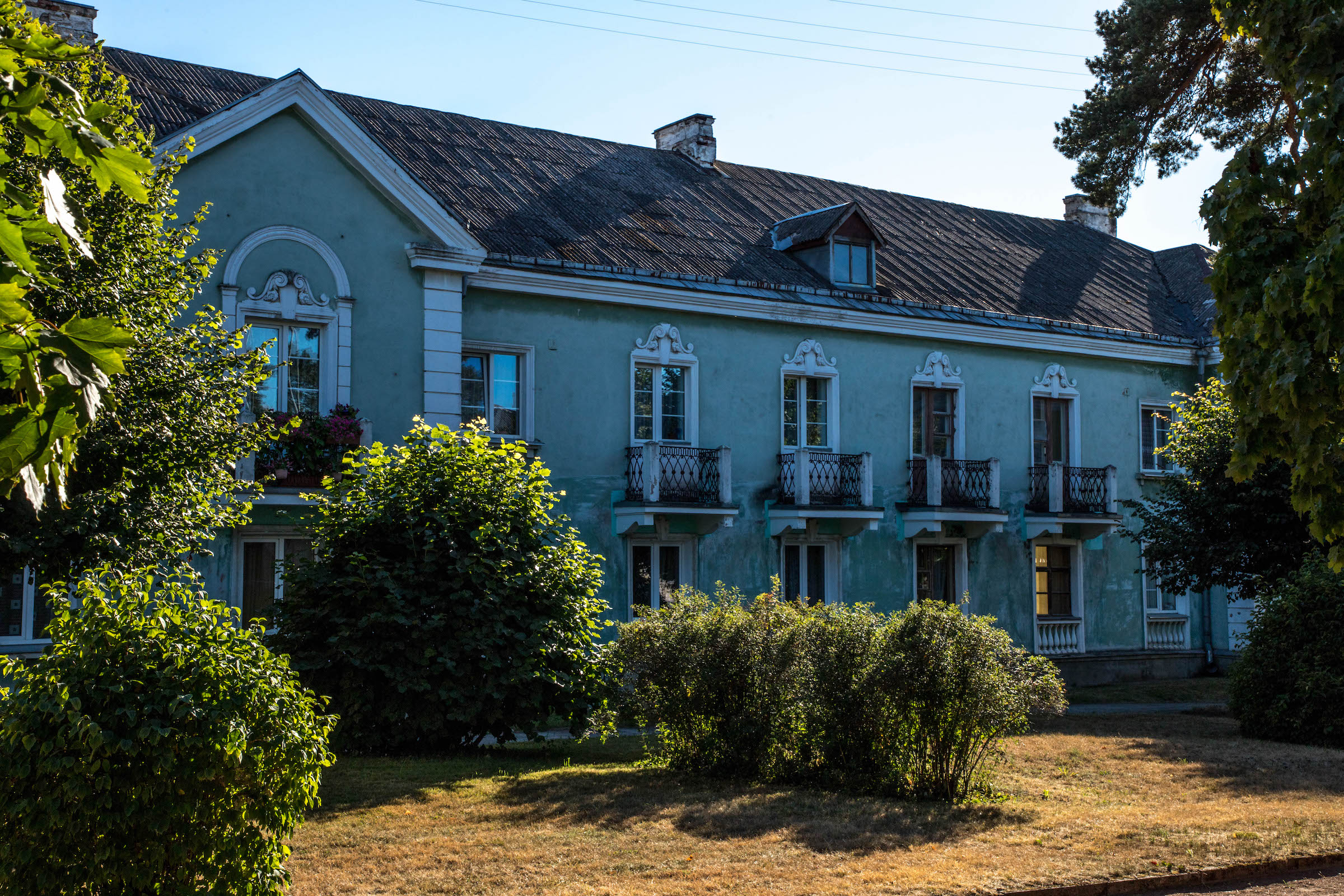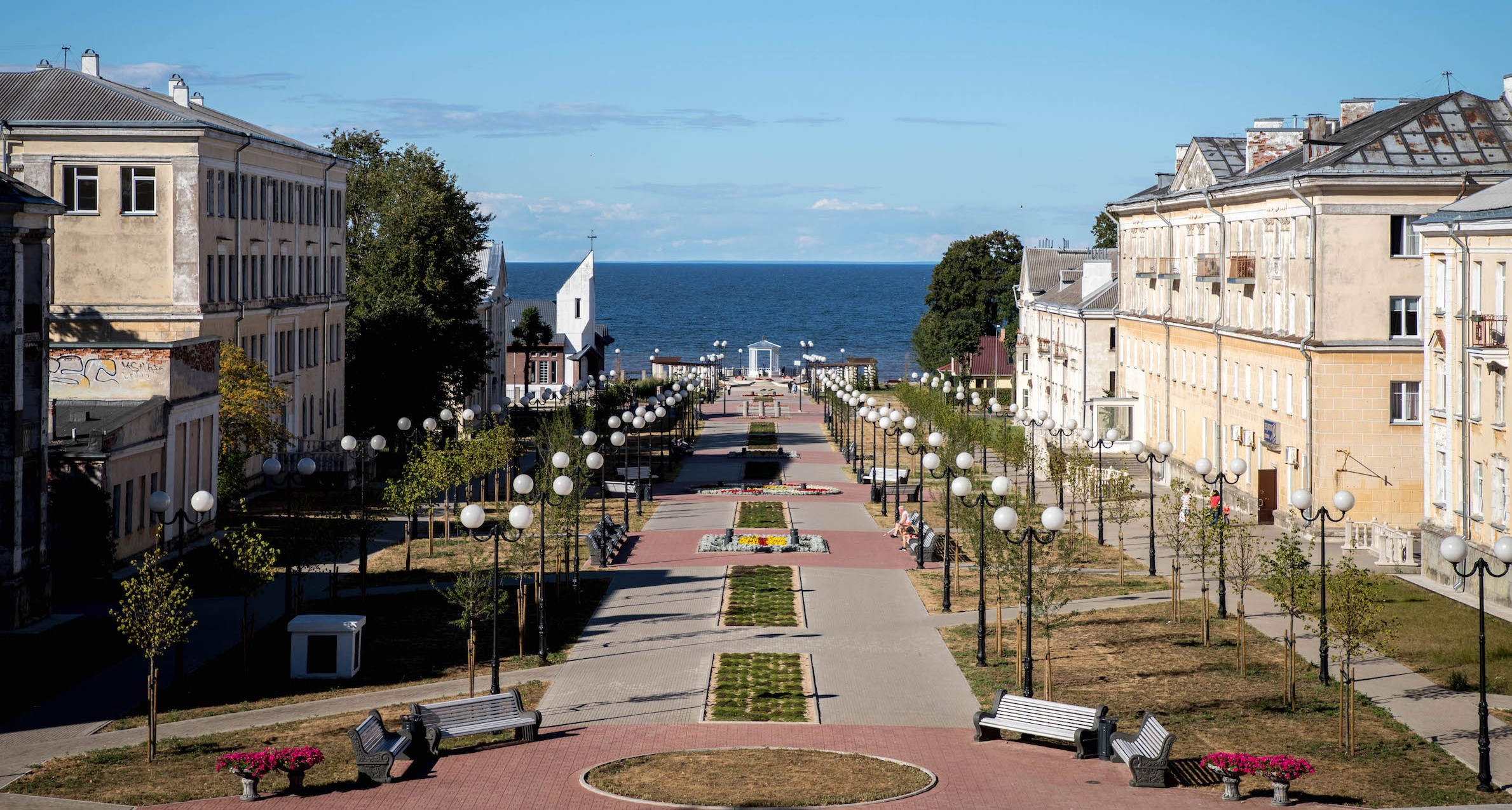by Darmon Richter, SILLAMÄE
The town of Sillamäe has the dreamlike, not-quite-real ambience of an off-season holiday resort. Its broad neo-classical avenues sweep down towards the Baltic coastline, where a row of empty benches look out from an immaculate plaza over the sea. Today the town has a population in the region of 14,000 people, but even in August, Sillamäe’s parks and public spaces feel relatively uninhabited. The quaint architecture throughout – much of it built in the 1940s, but made to look 40 years older than that – lends to the growing sensation that one is exploring an illusory model town, or a film set. Had The Prisoner been a Soviet television production, then Sillamäe really ought to have been where they set it.

Located on the north coast of Estonia, 30 kilometres from the border with Russia, Sillamäe grew out of an older village. The original settlement – known as Sillamäggi – existed at least as early as the 1500s, and by the 19th century it was a popular resort destination. Holidaymakers in those years included celebrities such as the Russian composer Tchaikovsky, and Ivan Pavlov, the physiologist famous for his work on classical conditioning, who had his own dacha at Sillamäggi.
Later, in the 1920s, Sillamäggi was recognised for its mineral wealth and a Swedish company established an oil shale mining plant on the edge of the town. When the Nazis occupied Estonia during WWII they used slave labour, sourced from their various concentration camps in the vicinity, to keep those mines going. The Nazis sabotaged the plant on their retreat from Estonia in 1944, but it would be rebuilt in the following years by the incoming Soviet forces.

The US bombings of Hiroshima and Nagasaki in 1945 prompted an arms race. Other world powers began amassing their own nuclear stockpiles and deterrents. So when the Soviet Union discovered uranium contained within the Dictyonema shale at Sillamäggi, they set to work immediately – rapidly developing this former resort into a fully fledged industrial town. Sillamäe, as it exists today, was founded in 1947 and like many of the cities involved with the Soviet nuclear industry, local operations were a matter of closely guarded secrecy. The new Sillamäe was a ‘closed city,’ often referred to by codenames and guarded within a military perimeter. No one entered or left without approval, and often it didn’t even appear on maps.
Meanwhile (from 1946-48) the Sillamäe metallurgy factory was developed into Kombinat No. 7, a plant for enriching the uranium mined from shale in the nearby cliffs. The team of workers who would populate this new industrial town were Soviet citizens, shipped in from elsewhere to become permanent residents of Sillamäe. Though like the Nazis had before them, the Soviets also used forced labour (typically convicts and POWs) to fill out their work force.

In 1949, uranium from Sillamäe was used in the first Soviet-made nuclear bomb. Between 1947 and 1952 the Sillamäe operation mined around 250,000 tonnes of Dictyonema shale, from which it was able to produce approximately 20 tonnes of pure uranium. The yield – less than 0.1% – was poor, and the process left behind a significant volume of solid waste; some of it extremely hazardous. Either because local resources ran dry, or because it was simply more economical (different sources give different explanations), after around a decade, Kombinat No. 7 began enriching uranium ore shipped in from elsewhere. From 1950 until 1977 more than four million tonnes of it was imported (largely from allies such as Poland, Czechoslovakia, Romania, Hungary and East Germany), which was refined at Sillamäe to produce an estimate of more than 20,000 tonnes of elementary uranium. For two decades after that, the factory handled pre-processed uranium raw material, or refined the element from Uranium dioxide. In total, between 1948 and 1990, it is believed that almost 100,000 tonnes of uranium (and over 1,300 tonnes of enriched uranium) was produced by the Sillamäe plant, making it the third largest producer in the Soviet bloc. Sillamäe’s uranium was used in 70,000 nuclear weapons.

Sillamäe, with its ‘secret’ status and strictly guarded perimeters, was a kind of prison for its residents… and particularly in its early years of operation, the working conditions at the Kombinat No. 7 plant were said to be horrific. But for those engineers, physicists and labourers who were selected for a life in Sillamäe, the town itself proved a gilded cell. The architecture epitomised the imperial affectations of mid-century Stalinist-classicism – manor-style houses and stately promenades lined the wide boulevards through town. Faux-Grecian pillars adorned government administrative buildings.
Sillamäe had a Palace of Culture, a standard feature in Soviet cities, and streets named after Lenin and Gagarin; but the town hall borrowed the look of a traditional Estonian Lutheran church. An odd choice, it might seem, in a strictly atheist society… but perhaps the idea was to treat those incoming Soviet workers to a taste of local architectural flavours.
Originally built for 3,000 plant employees, Sillamäe grew to absorb other neighbouring settlements. In 1957 it was granted town status, and in 1987, a year that marked both the 70th anniversary of the October Revolution and the 40th anniversary of Sillamäe’s founding, a new monument was erected in the park outside the Palace of Culture: the unmistakeable figure of Prometheus, bringer of fire, holding aloft the symbol of an atom. Sillamäe was not the first industrial town to be associated with the Greek Titan – by this point it was something of a tradition in the Soviet Union and its allied republics, where dozens of Prometheus statues had already been raised in the vicinity of power stations and metallurgical plants (a subject I cover in quite some depth in my book, Chernobyl: A Stalkers’ Guide). But the date of this one was noteworthy: at a time when the writing was already on the wall for both the Sillamäe plant, and more broadly, the Soviet Union as a whole. A heroic personification of the Soviet nuclear programme raised just one year after the Chernobyl disaster. It would be hard not to read it as one desperate last act of propaganda.
Today, that Sillamäe monument is not even identified as ‘Prometheus.’ A plaque on the base, written in Russian and Estonian, calls it a monument to the October Revolution. Wikipedia vaguely titles it a ‘Soviet atomic statue.’ Sillamäe’s uranium operation shut down in 1990, the Soviet Union collapsed the year after that, and this former closed city began the awkward process of integrating into a newly independent Estonia. Somewhat ironically, the Kombinat No. 7 plant that used to produce uranium for Soviet nuclear missiles – privatised in 1997 as the ‘Silmet’ facility – has since been bought by an American firm. The US mining group Molycorp has used Sillamäe since 2011 as a centre for processing rare earth elements.

In other ways, Sillamäe feels like a place that is resistant to change. The town’s population had peaked at around 20,000 citizens by the start of the 1990s – and today its 14,000 residents are for the majority still ethnic Russians. Russian remains the dominant language in Sillamäe, and this has the feeling of a place where more or less everyone knows one another. It’s not that outsiders are made to feel unwelcome here, far from it… but one can’t help but feel noticed. There is a vaguely perceptible distance still between Sillamäe, and the world outside it. In line with the general de-communisation process that has seen streets, villages and cities renamed in numerous countries across the former communist bloc, Sillamäe’s central V. I. Lenin Avenue changed its name to Viru Boulevard, after the name of this ancient region of Estonia. However it kept its street named after Yuri Gagarin, while both the Soviet Palace of Culture and the ‘Rodina’ (‘Motherland’) cinema already have protected status. In 2020 it was proposed that the whole town centre be placed onto a heritage conservation list in respect of its unique architectural vision. All the while, smuggled in amongst the details of building facades and tile work, Soviet motifs such as hammers, sickles and stars can be spotted in Sillamäe with far more frequency than would be tolerated these days in most other Estonian cities.

Contemporary Sillamäe is left with another Soviet souvenir, too. Much of the uranium ore dug from these cliffs, or the concentrates shipped into Sillamäe from elsewhere, would end up being discarded as waste in the refinement process. In the early years of the project it was reportedly dumped straight into the sea, but later, it went into tailing ponds at the northwest end of town. Had this toxic sludge – millions of tonnes of waste – made it into the Baltic Sea, just 30 metres away at its closest point, then this would have posed a severe ecological risk to the region. In 2008 Estonia and the EU completed a 10-year project to better isolate this waste material inland, by installing watertight concrete barriers to prevent it from seeping into the sea, and then covering the pond with layers of soil and clay. They were successful in reducing radiation onsite to normal, natural levels; but the source of that radiation remains buried where it is, and will continue to be toxic for generations to come.
Meanwhile in the centre of Sillamäe, where life continues at its pleasant, slow and ever-so-slightly strange pace, the sombre faces on a monument to the Soviet army gaze impassively down the main street. Concrete panels bear the likenesses of a soldier, a pilot, and a sailor, the armed forces who liberated Estonia from Nazi occupation, only to replace that with a half-century of their own brand of foreign leadership. Around the monument lay tributes and bouquets of fresh flowers; just a small reminder that while Sillamäe might be Estonian now, it nevertheless remains very much Sillamäe.
Darmon Richter is a writer, photographer, and author of Chernobyl: A Stalkers’ Guide. Details of his past and current projects can be found at www.darmonrichter.com.
This article originally appeared on The Bohemian Blog
All images – Darmon Richter/The Bohemian Blog
Like what Deep Baltic does? Please consider making a monthly donation – help support our writers and in-depth coverage of Estonia, Latvia and Lithuania. Find out more at our Patreon page.







